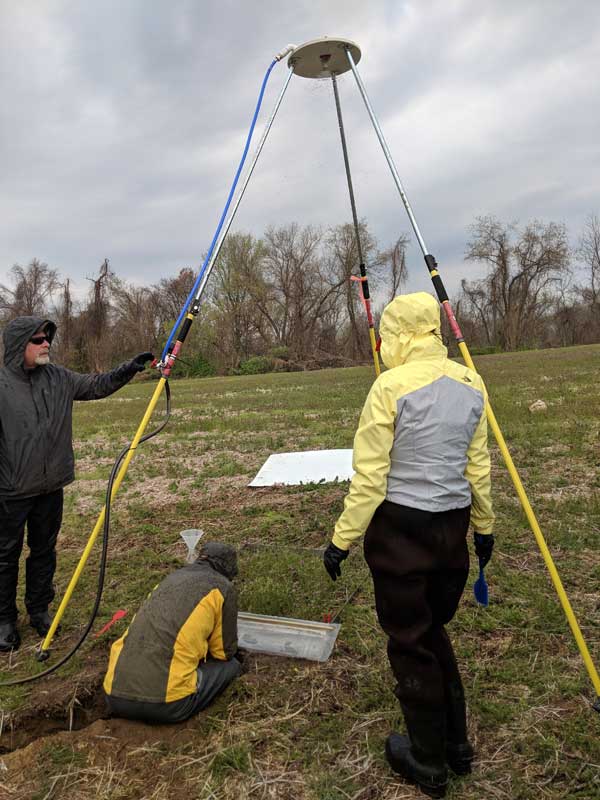 With the cabin fever of late winter approaching, many of us are eagerly anticipating the perfectly cultivated rows of tomatoes, beans, and other vegetables that summer will deliver. When giving your garden an occasional soak with the garden hose, have you ever wished you could perfectly replicate the delicate drops that Mother Nature provides?
With the cabin fever of late winter approaching, many of us are eagerly anticipating the perfectly cultivated rows of tomatoes, beans, and other vegetables that summer will deliver. When giving your garden an occasional soak with the garden hose, have you ever wished you could perfectly replicate the delicate drops that Mother Nature provides?
It turns out there is a scientifically valid way to simulate rain, and scientists at Stroud Water Research Center are using it to perform cutting-edge research on the links between farming practices and healthy streams.
Farming practices are changing around the world in an effort to improve crop yields and drought resistance by making soils healthier, but our waterways benefit from healthy soils too. Cover crops, reduced tillage, and crop rotations build soil organic matter and reduce the need for chemicals, while organic farming eliminates chemicals altogether.
While prior research suggests these practices will decrease sediment and nutrient runoff and increase infiltration during rain storms, scientists haven’t actually compared how much of a positive effect each of these techniques can have on streams and rivers.
A Brand-New Approach
Drs. Melinda Daniels, Diana Oviedo-Vargas, and Marc Peipoch are conducting the world’s first experiments to measure how these farm practices can affect stream ecosystems. They use a carefully calibrated rainfall simulator to mimic the even distribution and impact of raindrops on farming fields, and then collect all the water, sediment, and nutrients that wash off a square meter of field during their simulated half-hour rainstorm.
The experiments are done during different seasons and compare traditional farm fields with conservation (cover crops, reduced tillage, crop rotations) and organic practices. To be even more realistic, the experiments mimic two back-to-back rain events with a 10-minute dry spell in between. The first event recreates the rain falling on dry soil and the second simulates heavy rain on saturated soils that can precede severe flooding.
Preliminary Results
The first season of measurements wrapped up in 2019, so it is too early to make big conclusions about the impact of specific farming practices. However, the rainfall simulator proved effective at replicating the dynamics of a rainstorm: sediment and water runoff were 15%-30% higher during the second rain event than the first.
While these experiments are merely postage stamp-sized experiments relative to the thousands of square miles of farms across our region, the researchers have a powerful way of checking how their results can be scaled up to entire watersheds. By measuring how much sediment, water, and nutrients leave the agricultural watershed as stream flow, they hope to verify that the differences in farm practices they measure in their rainfall simulations actually make a difference at the watershed scale.
After all, solutions for clean water and healthy streams will not simply drop from the sky. Sometimes you just have to make it rain to resolve pressing environmental problems that cannot wait any longer.



